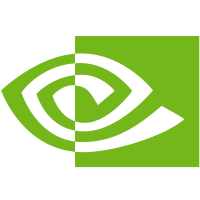 rolvram
4 days ago
rolvram
4 days ago
Nvidia Is the Second Cheapest "Magnificent Seven" Stock Right Now Based on 1 Key Valuation Metric. Is It a No-Brainer Buy?
By Keith Speights – Apr 21, 2025 at 4:48AM
Only Meta Platforms has a lower PEG ratio than Nvidia among the "Magnificent Seven" stocks.
Nvidia's valuation is so low because of a steep decline in its share price and continued expectations of strong earnings growth.
The stock isn't a no-brainer pick, but it's still a good pick for long-term investors.
For a long time, the last description most people would use to describe Nvidia (NVDA -3.01%) was "cheap." Some still wouldn't describe the stock with that term. For example, NYU finance professor Aswath Damodaran, known as the "Dean of Valuation," thinks Nvidia remains overvalued by roughly 23%.
However, Nvidia is the second-cheapest "Magnificent Seven" stock right now based on one key valuation metric. Is the stock a no-brainer buy?
Taking Nvidia down a peg (in a good way)
If we only considered Nvidia's trailing 12-month price-to-earnings ratio of 35.5, the stock would seem quite expensive. The chipmaker's trailing P/E multiple is the second-highest in the Magnificent Seven, trailing only Tesla with a sky-high P/E ratio of 118.4.
Looking to earnings over the next year makes Nvidia's valuation much more palatable. Its shares trade at roughly 23.3 times forward earnings. Within the Magnificent Seven, only Google parent Alphabet and Facebook parent Meta Platforms have lower forward earnings multiples.
But peering even further into the future makes Nvidia appear even more attractive. The stock's price-to-earnings-to-growth (PEG) ratio, which is based on analysts' earnings growth projections over the next five years, is a low 1.02. Nvidia is running neck-and-neck with Meta for the lowest PEG ratio. Meta's PEG ratio is only a hair lower at 1.01.
Why Nvidia's valuation is so low
The obvious reason why Nvidia's PEG ratio is so low is that the stock has fallen sharply. Nvidia's share price is now down more than 30% below its previous high set early in 2025. This steep decline is due to several factors.
In January, Chinese artificial intelligence (AI) company DeepSeek's introduction of a powerful large language model (LLM) developed at a low cost raised concerns about the future demand for Nvidia's expensive GPUs. President Trump's tariffs caused a major sell-off of stocks, with tech stocks such as Nvidia getting shellacked. Most recently, U.S. restrictions on exports of Nvidia's H20 AI chips to China resulted in the company taking a hit of $5.5 billion.
But a lower share price is only one factor behind Nvidia's low PEG ratio. The other key ingredient is strong earnings growth expectations. Despite worries about increased competition and the Trump administration's trade policies, many Wall Street analysts still think Nvidia will continue to deliver exceptional earnings growth.
Nvidia's largest customers, including several of its Magnificent Seven peers, remain committed to investing heavily in AI. Nvidia's GPUs are still the most powerful chips for powering AI models, especially with the launch of its new Blackwell platform.
While AI is Nvidia's primary growth driver, it isn't the only one. CEO Jensen Huang believes that the shift from general-purpose computing to accelerated computing presents a $1 trillion opportunity for his company.
Is Nvidia stock a no-brainer buy?
With Nvidia nearly tied for the lowest PEG ratio among the Magnificent Seven stocks, is it a no-brainer buy? I wouldn't go that far.
It's hard to say that no thinking is required to buy a stock when a prominent valuation expert such as Damodaran believes the stock can go significantly lower. Wall Street's five-year earnings growth projections could prove to be overly optimistic. The uncertainty and fears of a recession created by the Trump administration's tariffs also raise legitimate concerns about investing in Nvidia right now.
That said, a stock can be a good pick even if it's not a no-brainer pick. I think Nvidia falls into this category. My view is that AI adoption isn't going to taper off. Although other companies will develop competitive AI chips, I don't expect them to overtake Nvidia's GPUs anytime soon. Nvidia will also almost certainly continue to roll out even more powerful GPUs.
If you're a long-term investor, I think Nvidia's sell-off presents an excellent buying opportunity. This AI company just might be the most magnificent choice among the Magnificent Seven right now.
 rolvram
1 week ago
rolvram
1 week ago
Below is a summary of the Magnificent 7’s performance, focusing on revenue growth, earnings growth, and forward P/E ratios, based on available data for 2024 and earlier quarters. Since exact quarterly breakdowns for all eight quarters are not fully detailed, I’ll use annual 2024 data, quarterly highlights, and trends where available.
Revenue Growth (2024 Full Year, unless specified):
NVIDIA: 114% (Q4 2024: $39.3B, up 78% YoY).
Meta: 22% (ad revenue-driven).
Microsoft: ~17% (Q3 2024, fiscal year ends June).
Alphabet: ~12-15% (strong Q3/Q4 2024).
Amazon: ~10-12% (Q4 2024: 12.8% for Mag-7 aggregate).
Apple: ~5% (Q3 2024 guidance).
Tesla: 1% (weak due to EV competition).
Earnings Growth (Q4 2024 and Recent Quarters):
NVIDIA: Led Mag-7 for six quarters, contributing ~73% of Mag-7 earnings growth in Q4 2024. GAAP EPS $2.94 (TTM, up 147% YoY).
Amazon: Strong Q4 2024, driven by AWS and AI.
Alphabet: Top 5 S&P 500 earnings contributor in Q3/Q4 2024.
Meta: Robust Q4 2024, high margins (>25%).
Microsoft: Steady, AI-driven (Azure) growth.
Apple: 16% YoY earnings growth in Q4 2023, slower in 2024.
Tesla: Declines (-33% operating profits Q2 2024, -40% Q4 2023).
Forward P/E Ratios (Estimated as of Q1 2025):
NVIDIA: 23.
Alphabet: ~20-25 (lowest, ~1.5x PEG in Jan 2024).
Meta: ~25-30.
Amazon: ~40-50 (down from 312x in 2023 due to earnings growth).
Microsoft: ~30-35.
Apple: ~30-35.
Tesla: ~80-100 (high due to low earnings, ~86x in 2023).
Mag-7 aggregate: 28.3x (vs. S&P 500 at 21.8x).
PEG Ratios (Jan 2024, where available):
Alphabet: 1.5x (lowest).
NVIDIA: 1.6x (likely improved with lower P/E and high growth).
Tesla: 1.8x (33% EPS growth projected 2024-2028).
Mag-7 average: 1.68 (Q3 2023).
Profit Margins (2024):
NVIDIA: 55.8% (gross 73%, operating 61%).
Meta, Microsoft, Alphabet: >25%.
Apple: High, but not quantified here.
Amazon: Lower, due to high costs.
Tesla: Lowest, impacted by price cuts.
Step 2: Analysis of Trends (Q1 2023–Q4 2024)
NVIDIA: Revenue surged 114% in 2024 ($130.5B), with Q4 2024 at $39.3B (up 78% YoY). EPS grew 147% YoY, driven by AI chip demand (90% margins). Forward P/E of 23 is attractive given growth, down from ~250x in 2023.
Alphabet: Consistent 12-15% revenue growth, low P/E (~20-25x), and PEG (1.5x) suggest value. Strong in search, YouTube, and cloud.
Meta: 22% revenue growth, high margins, and P/E ~25-30x. AI and ad revenue are key drivers.
Amazon: 10-12% growth, with AWS and AI boosting Q4 2024. Higher P/E (~40-50x) reflects growth expectations but lower margins.
Microsoft: 17% revenue growth, AI (Azure) strength, P/E ~30-35x. Stable but less explosive than NVIDIA.
Apple: 5% revenue growth, high margins, P/E ~30-35x. Growth slowed, tied to iPhone and Apple Intelligence.
Tesla: 1% revenue growth, earnings declines, and high P/E (~80-100x). Long-term EV/AI potential but current weakness.
Step 3: Best Buy (Question A)
The best buy balances valuation (low P/E, PEG), growth (revenue/earnings), and risk (fundamentals, market position).
NVIDIA:
Pros: 114% revenue growth, 147% EPS growth, 55.8% margins, forward P/E 23 (lowest among Mag-7), PEG ~1.6x. AI chip dominance (90% share) and Blackwell platform demand are strong.
Cons: Volatility (beta 1.96), export restrictions ($5.5B Q1 2025 charge), and potential AI spending slowdown.
Why Strong: P/E of 23 is compelling for its growth rate, making it undervalued relative to peers.
Alphabet:
Pros: P/E ~20-25x, PEG 1.5x, 12-15% growth, diversified revenue, and high cash flows. Analyst optimism (high StarMine ARM score).
Cons: Regulatory risks (antitrust) and AI competition.
Why Strong: Lowest valuation with solid growth, but less upside than NVIDIA.
Meta, Microsoft, Amazon, Apple: Offer growth but higher P/E ratios (25-50x) and slower growth (5-22%) than NVIDIA. Amazon’s margins and Apple’s slow growth are concerns.
Tesla: High P/E (~80-100x), 1% growth, and earnings declines make it the least attractive.
Best Buy: NVIDIA. Its forward P/E of 23, combined with 114% revenue growth and 147% EPS growth, offers the best value-growth mix. Alphabet is a close second for its lower P/E and stability, but NVIDIA’s upside is unmatched.

 looking 4 a win
1 day ago
looking 4 a win
1 day ago
 PEACHMAN
1 day ago
PEACHMAN
1 day ago
 Oleblue
1 day ago
Oleblue
1 day ago
 PennyWorld
1 day ago
PennyWorld
1 day ago
 PennyWorld
1 day ago
PennyWorld
1 day ago
 cadillacdave
2 days ago
cadillacdave
2 days ago
 uksausage
3 days ago
uksausage
3 days ago
 cadillacdave
3 days ago
cadillacdave
3 days ago
 STOCKMONSTER
3 days ago
STOCKMONSTER
3 days ago
 PennyWorld
5 days ago
PennyWorld
5 days ago
 cadillacdave
5 days ago
cadillacdave
5 days ago
 doc2016
5 days ago
doc2016
5 days ago
 Neverhadawinner
6 days ago
Neverhadawinner
6 days ago
 cadillacdave
7 days ago
cadillacdave
7 days ago
 Slim6
1 week ago
Slim6
1 week ago
 cadillacdave
1 week ago
cadillacdave
1 week ago
 cadillacdave
1 week ago
cadillacdave
1 week ago
 tw0122
1 week ago
tw0122
1 week ago
